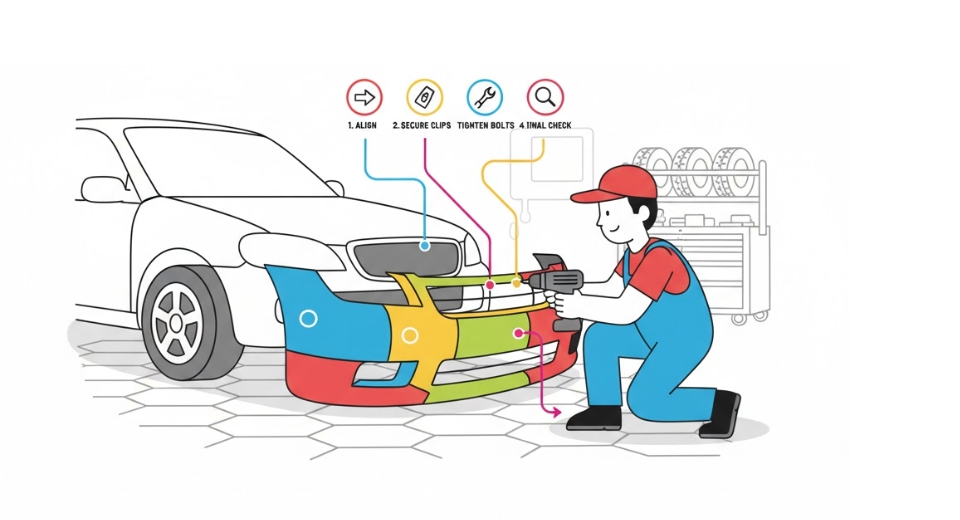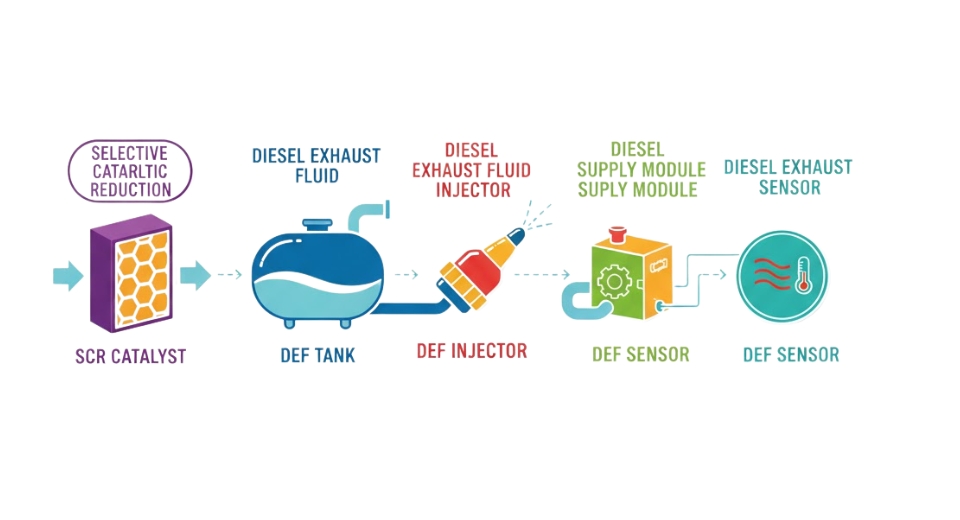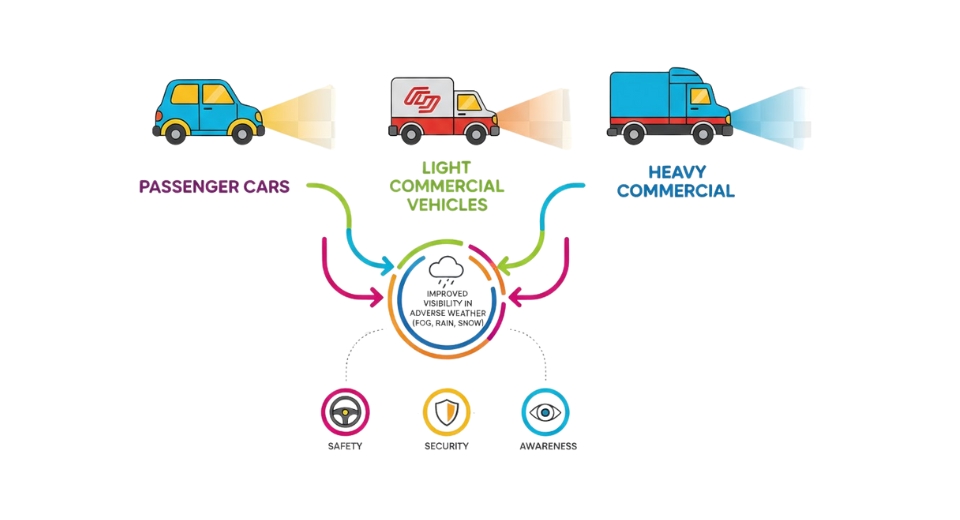Market Overview
Weather strips are an excellent choice for use in sealing of automotive doors and windows, such that the extreme humid climate does not affect the interiors of the vehicle. The weather strips also protect against rain and rugged environment conditions, offering safety during travel. Weather strips are also attached on trunk and roof railing to provide better protection against high temperatures.
Market Dynamics
The gradual increase in global automotive production volume and rising incorporation of temperature-controlled air conditioning in vehicles are the primary factors driving the market growth. The consistent manufacturing of automobile vehicles would directly influence the demand for weather strips towards positive outcomes, as more and more manufacturers look towards the incorporation of weather strips for added advantages. The manufacturing of automotive doors, windows, windshields, trunk, and several other parts would lead to heightened integration of weather strips on all aspects, as the strips also ensure the longer service life of the parts. The improved performance of weather strips providing protection against elements of nature, during bad weather conditions, would also boost its incorporation among automobile owners. The growing interest among customers to install air conditioning units in passenger vehicles and temperature-controlled machinery in commercial vehicles would instigate improved figures of weather strip integration, as cars need to be insulated against chances of air leak. However, volatility and fluctuations in raw material pricing might hamper market growth. The levying of additional taxes and tariffs on shipping & transportation of raw materials to production hubs might also act as barriers to the market growth prospects. The rapid adoption of commercial vehicles in cold-stored food and pharmaceuticals delivery would provide lucrative opportunities for the market in the coming years. The rising deployment of commercial vehicles in the shipping & logistics of processed food and temperature-sensitive pharmaceuticals would offer crucial manufacturers with new possibilities of product sales and business expansion over the forecast period.
Market Segmentation
The global Automotive Weather Strip market is mainly classified based on Type and Application. Type is segmented into EPDM Strip, TPE/TPO/TPV Strip, and Others. By Application, the market is divided into Passenger Vehicle and Commercial Vehicle.
The EPDM Strip segment by Type holds a substantial share in terms of overall market value and volume owing to its improved stability and high heat resistance for an extended period. The odor-free operations of EPDM weather strip would further improve its prospects of application and segment growth over the forecast period.
In terms of volume, the Passenger Vehicle Consumption by Application is poised to garner 168.7 Million Tons by 2026; growing at a CAGR of 5.3% during 2020-2026. The rising customer demand for addition of air-conditioned interiors and cooling units in vehicles for personal comfort would bolster the segment growth prospects in the coming years.
Regional Analysis
Based on geography, the global Automotive Weather Strip market is divided into North America, Europe, Asia-Pacific, South America, and Middle East & Africa. North America is further divided in the U.S., Canada, and Mexico, whereas Europe consists of the UK, Germany, France, Italy, Russia, and Rest of Europe. Asia-Pacific is segmented into India, China, Japan, South Korea, and Rest of Asia-Pacific. The South America region includes Brazil, Argentina, and the Rest of South America, while the Middle East & Africa is categorized into GCC Countries, Egypt, South Africa, and Rest of Middle East & Africa.
North America is a leading region and holds a substantial share in terms of overall production volume owing to the establishment of expansive manufacturing facilities that cater to the weather strip needs of the global automotive sector. The increasing efforts of funding and investments for the extension of production facilities would continue to improve the growth prospects of the regional market.
Competitive landscape
The Automotive Weather Strip market is moderately fragmented, with several global and regional players operating with expansive manufacturing capabilities and extensive product distribution networks.
Key players operating in the Automotive Weather Strip industry include Cooper-Standard Automotive Inc., Toyoda Gosei Co., Ltd., Hutchinson S.A., Henniges Automotive Holdings, Inc., Nishikawa Rubber Co., Ltd., SaarGummi International GmbH, Hwaseung Industries Co., Ltd., Amesbury Group Inc., Ultrafab, Inc., Magna International Inc., Tokai Kogyo Co., Ltd., Jiangyin Haida Rubber and Plastic Co., Ltd., Qinghe Yongxin Seal Co., Ltd., and Hubei Zhengao Automotive Accessories Co., Ltd.
The extension of manufacturing capabilities through expansion in production facilities and diversification of business capabilities through strategic acquisitions and partnerships are the primarily followed business strategies of the top players looking to capture substantial market share during the forecast period.
Automotive Weather Strip Market Key Segments:
By Type
- EPDM Strip
- TPE/TPO/TPV Strip
- Others
By Application
- Passenger Vehicle
- Commercial Vehicle
Key Global Automotive Weather Strip Industry Players
- Cooper-Standard Automotive Inc.
- Toyoda Gosei Co., Ltd.
- Hutchinson S.A.
- Henniges Automotive Holdings, Inc.
- Nishikawa Rubber Co., Ltd.
- SaarGummi International GmbH
- Hwaseung Industries Co., Ltd.
- Amesbury Group Inc.
- Ultrafab, Inc.
- Magna International Inc.
- Tokai Kogyo Co., Ltd.
- Jiangyin Haida Rubber and Plastic Co., Ltd.
- Qinghe Yongxin Seal Co., Ltd.
- Hubei Zhengao Automotive Accessories Co., Ltd.
What Report Provides
- Full in-depth analysis of the parent Industry
- Important changes in market and its dynamics
- Segmentation details of the market
- Former, on-going, and projected market analysis in terms of volume and value
- Assessment of niche industry developments
- Market share analysis
- Key strategies of major players
- Emerging segments and regional growth potential








 US: +1 3023308252
US: +1 3023308252






